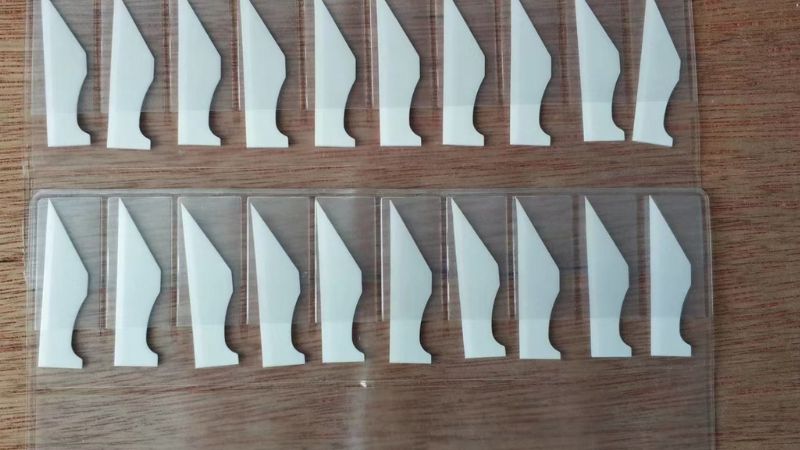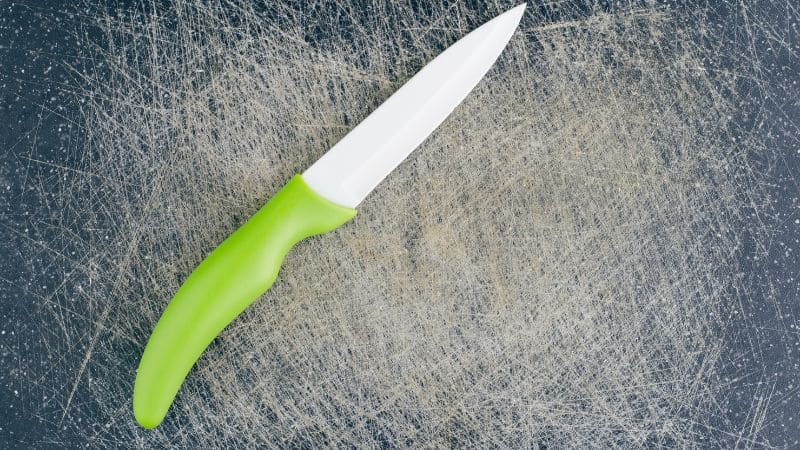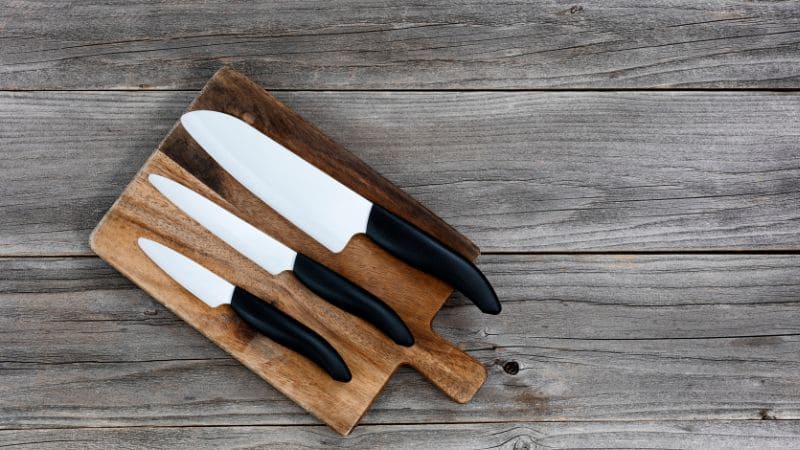Table of Contents
Ah, the ceramic vs steel blade debate. It’s not just for kitchen aficionados anymore. These blades are making their way into various industries, from construction to arts and crafts. So, let’s slice through the noise and get to the point, shall we?
Ceramic blades are the ninjas of the blade world—stealthy, sharp, and incredibly efficient. Steel blades, on the other hand, are the workhorses—strong, reliable, and versatile.
Why should you care? Because the blade you choose can significantly impact your work, whether you’re a professional tradesperson or a DIY enthusiast.

Why Are Ceramic Blades So Darn Sharp?
Ceramic blades are made from zirconium oxide, a material second only to diamonds in hardness. This means they can be ground to a much finer edge than steel. The result? A blade that slices through tomatoes like they’re butter. Don’t just take my word for it; studies have shown that ceramic blades retain their sharpness 10 times longer than steel blades.
But it’s not all sunshine and rainbows. Ceramic blades are brittle and can chip or break if you’re not careful. So, while they’re perfect for slicing and dicing, they’re not ideal for heavy-duty tasks like chopping bones.
How Do Steel Blades Measure Up?
Steel blades are the old faithful of the knife world. They’re strong, durable, and versatile. You can use them for everything from slicing onions to hacking through a rack of ribs. And let’s not forget, they’re magnetic—so you can stick ’em on a magnetic strip and show off your knife collection to your guests.
However, steel blades have their drawbacks. They require frequent sharpening and are prone to rust if not properly maintained. Plus, they’re heavier, which can be a pain during those marathon cooking sessions.

What About Maintenance?
the dreaded “M” word. If you’re like me, you want a knife that performs well without requiring a PhD in Blade Maintenance. Ceramic blades are low-maintenance; they rarely need sharpening and are easy to clean. Just a quick rinse and you’re good to go.
Steel blades, on the other hand, need regular sharpening and oiling to prevent rust. It’s like having a pet that needs constant attention. Sure, they’re useful, but are they worth the hassle?
What’s the Cost Difference?
The bottom line—the part where we talk numbers and cents, or should I say, sense? Ceramic blades are like that high-end sports car you’ve been eyeing; more expensive upfront, but oh, the performance! Think of it as an investment. Their longevity and low maintenance mean fewer trips to the “blade mechanic,” saving you money in the long run. It’s like buying a Tesla; the initial cost is high, but you save on gas and maintenance down the line.
Now, steel blades are your reliable sedans—cheaper but with more frequent pit stops. You’ll need to sharpen them more often, and let’s not forget, they might need replacing sooner than you’d like. It’s the classic “you get what you pay for” scenario.
Glass Cleaning: Which Blade Leaves No Streaks Behind?
When it comes to glass cleaning, the stakes are high—literally and figuratively. Whether you’re scaling a skyscraper or just trying to get those pesky streaks off your living room window, precision is absolutely key. Now, let’s talk about ceramic blades. These beauties are less likely to scratch the surface, making them the go-to choice for delicate tasks like this. They’re like the ballerinas of the blade world—graceful, elegant, and incredibly precise. Plus, they don’t rust. That’s right, no unsightly stains to ruin your day or your view. Studies have even gone so far as to confirm their effectiveness in glass cleaning applications.
But what about steel blades? Well, they’re the sturdy workhorses we all know and love, but let’s face it, they can be a bit too harsh on glass surfaces. Imagine inviting a bull to a china shop; it’s just not a good match. Using steel blades on glass can lead to scratches or, even worse, cracks that could have you dialing your insurance company faster than you can say “oops.”
So, if you’re in the window-cleaning business, or even if you’re just a perfectionist when it comes to your home, you might want to go ceramic. Trust me, your windows will thank you.
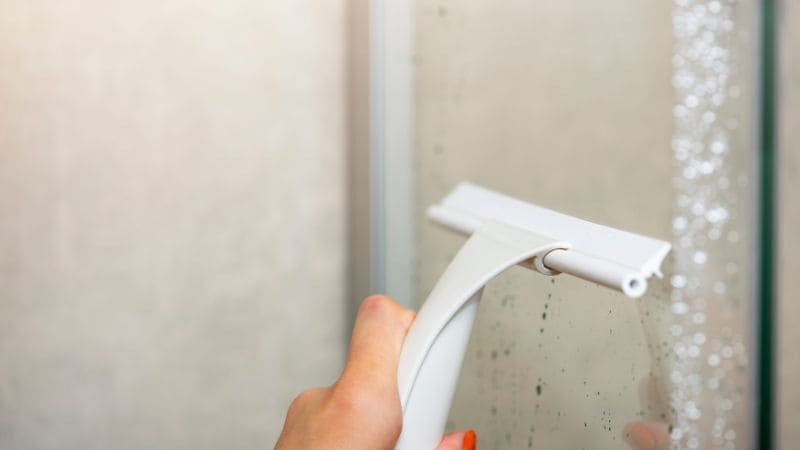
Floor Painting: Which Blade Cuts Through the Competition?
Floor painting—a task that’s as much about preparation as it is about the actual painting. Now, if you’re in this line of work, you know that removing old paint or cutting through tape is part of the game. Enter steel blades, the undisputed champions of heavy-duty tasks. These bad boys are as strong as they come, capable of handling all the wear and tear you can throw at them. They’re like the linebackers of the blade world—big, strong, and not afraid to get down and dirty.
But what about ceramic blades? Well, they’re sharp, no doubt about it. They could slice through a sheet of paper like it’s nothing. However, when it comes to floor painting tasks, they’re just not up to snuff. Their brittleness is their Achilles’ heel, making them prone to chipping or even breaking when dealing with hard surfaces like floors. It’s like bringing a knife to a gunfight—just not the right tool for the job.
So, when it comes to floor painting, steel blades are your go-to. They cut through the competition—literally and metaphorically. Cheers to a job well done!
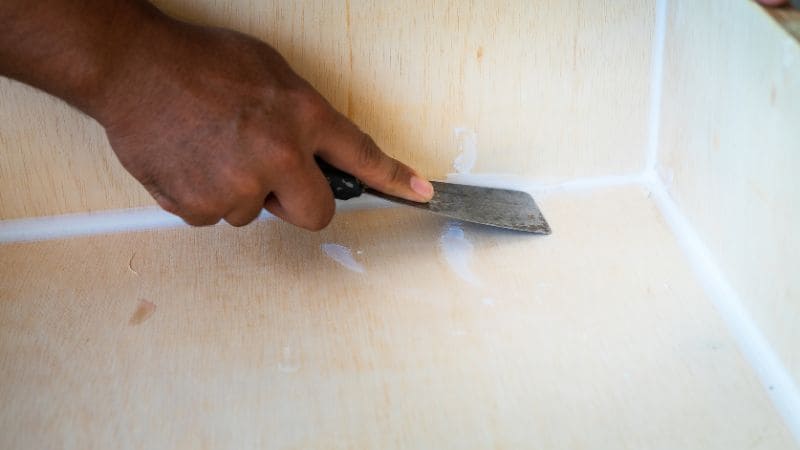
Pipe Cutting: Ceramic or Steel?
Now, if you’re dealing with pipes, whether it’s for plumbing, construction, or some DIY project, you need a blade that’s up for the challenge. Steel blades are the undisputed kings of this domain. They’re like the heavyweights of the boxing world—strong, durable, and they pack a punch. These blades can slice through plastic pipes with the ease of a hot knife through butter. And the cherry on top? They can be easily sharpened, extending their lifespan and giving you more bang for your buck.
Now, let’s talk about ceramic blades. They’re sharp, sure, but they’re like a featherweight boxer in a heavyweight match when it comes to pipe cutting. Their brittleness is a significant drawback, making them prone to chipping or even breaking under the strain of heavy-duty tasks. Imagine trying to cut through a steel pipe with a ceramic blade; it’s a recipe for disaster and project delays.
So, for the pipe cutting, steel blades are your trusty allies. They’re built for the job and won’t let you down when the going gets tough.
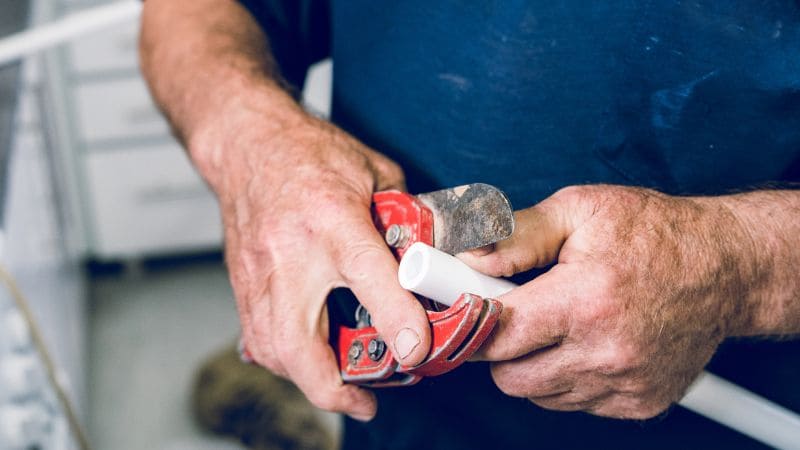
Cutting Plastic Parts: A Close Contest?
When it comes to cutting plastic parts, you need a blade that’s not just sharp, but also consistent. Enter ceramic blades—the surgeons of the manufacturing world. These blades offer a cleaner, more precise cut, reducing the need for any post-cut touch-ups. It’s like having a tailor who gets your measurements right the first time. Plus, these blades have a knack for resisting the build-up of plastic residue, making them easier to maintain and extending their runway life.
Now, what about steel blades? They’re no slouches, let me tell you. They can cut through plastic like a hot knife through butter. However, they do have their quirks. Steel blades may require frequent cleaning to remove plastic build-up, and let’s not forget the occasional sharpening. It’s like having a high-maintenance friend—great to have around, but requires a bit of extra attention.
Cutting Plastic Parts
So, when it comes to cutting plastic parts, it’s a closer contest than you might think. Both ceramic and steel have their merits, but if precision and low maintenance are your jam, ceramic might just edge out the competition. Cheers to making the cut!
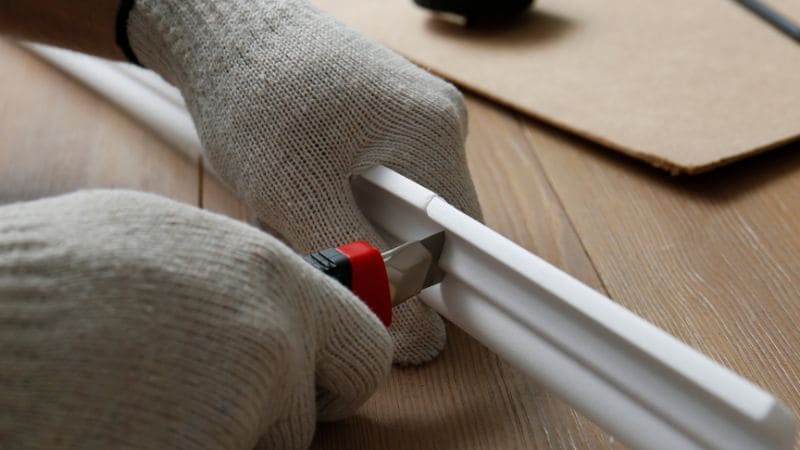
Snipping Threads: A Stitch in Time?
When it comes to snipping threads, precision isn’t just a luxury; it’s a necessity. Ceramic blades are the virtuosos of this world. They’re incredibly sharp, accurate, and they have the staying power of a rock star on a world tour. These blades stay sharp for an impressively long time, reducing the frequency of blade replacements. It’s like having a reliable lead guitarist who never misses a note.
Now, let’s talk steel blades. They’re the rhythm section—solid, reliable, but sometimes lacking that extra flair. While effective, they may dull quicker than their ceramic counterparts, affecting the quality of the cut. It’s like having a drummer who occasionally misses a beat; not a deal-breaker, but noticeable.
So, in the grand orchestra of textile manufacturing, both ceramic and steel blades have their parts to play. But if you’re looking for that extra bit of finesse, ceramic blades might just steal the show. Cheers to hitting all the right notes in your textile projects!
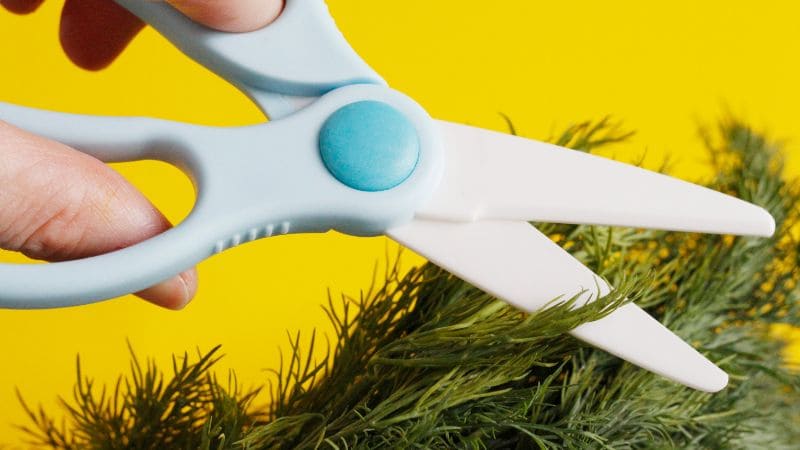
Peeling and Kitchen Use: The Culinary Showdown
Ah, the kitchen—a battleground where culinary warriors wield their blades with skill and finesse. When it comes to peeling and slicing fruits and vegetables, ceramic blades are your samurais. They’re incredibly sharp, and their non-reactive nature is like a secret sauce that keeps your produce fresh and free from browning. It’s like having a sous-chef who never takes a smoke break.
Now, let’s talk about steel blades. These are your Swiss Army knives—versatile and ready for anything. They can chop, mince, and even julienne if that’s your thing. However, they do have a couple of quirks. They may impart a metallic taste to acidic foods like tomatoes or citrus fruits. Plus, they require more frequent sharpening, so keep that honing rod handy.
So, in the culinary showdown of the century, both ceramic and steel blades have their merits. But if you’re looking for precision and longevity, ceramic might just be your top chef. Cheers to culinary excellence and may your dishes always be Michelin-star worthy!
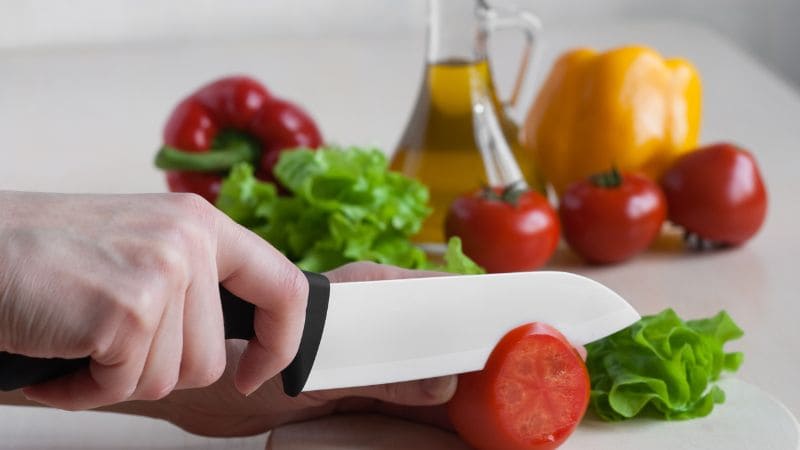
Conclusion
Whether it’s ceramic or steel, the right blade can make a world of difference in your work. Ceramic blades excel in precision tasks and are low-maintenance, while steel blades are versatile and ideal for heavy-duty applications. Choose wisely, and may your cuts always be clean and your edges sharp.
There you have it, folks. The blade battle has been fought across multiple fronts, and now the choice is yours. Choose wisely and cut confidently. Cheers!

